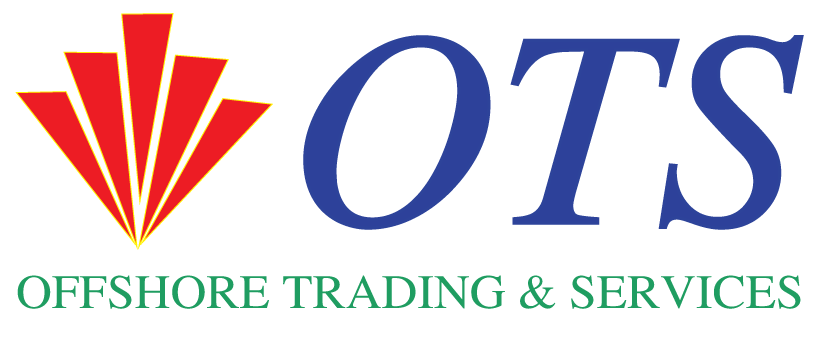This article explores the critical role of Asset Integrity Management (AIM) in the oil and gas and energy sectors. It delves into how a robust AIM framework directly contributes to significant cost savings and minimizes costly downtime, ensuring operational efficiency and long-term sustainability.
Asset Integrity Management: The Cornerstone of Cost Saving and Downtime Avoidance in Oil and Gas
In the high-stakes world of oil and gas and broader energy industries, operational continuity and financial prudence are paramount. The complex and often harsh environments in which these assets operate necessitate a proactive and systematic approach to maintaining their integrity. Asset Integrity Management (AIM) has emerged not merely as a regulatory compliance requirement but as a strategic imperative for achieving substantial cost savings and, crucially, avoiding debilitating downtime. This comprehensive framework, encompassing the design, construction, operation, and decommissioning of physical assets, is the linchpin for ensuring safety, reliability, and profitability.
The Multifaceted Benefits of Effective Asset Integrity Management
The value proposition of AIM extends far beyond mere risk mitigation. It is a direct driver of economic advantage, impacting the bottom line through several key avenues.
Economic Implications of Asset Failure
The financial ramifications of an asset failure in the oil and gas sector can be staggering. Unplanned shutdowns lead to immediate revenue loss from halted production. Beyond this, the costs associated with emergency repairs, replacement parts, and the mobilization of specialized personnel can escalate rapidly. Furthermore, environmental remediation, potential regulatory fines, and damage to corporate reputation add significant financial burdens. These are not isolated incidents but cumulative drains on profitability that a well-executed AIM program is designed to prevent.
Proactive Maintenance and Its Cost-Effectiveness
AIM champions a shift from reactive, “fix-it-when-it-breaks” methodologies to a proactive, predictive, and preventive approach. This fundamental change in philosophy yields significant cost efficiencies.
– Predictive Maintenance: Leveraging advanced diagnostic tools, sensor data, and analytical models to anticipate potential equipment failures before they occur. This allows for scheduled maintenance during planned shutdowns or at opportune times, minimizing disruption.
– Preventive Maintenance: Implementing scheduled inspection, testing, and servicing routines to reduce the likelihood of equipment failure. This includes tasks like lubrication, calibration, and component replacement based on expected lifecycles.
– Condition-Based Monitoring: Continuously tracking the operational parameters of critical assets. Deviations from normal operating conditions trigger alerts, enabling early intervention and preventing minor issues from escalating into major failures.
The cost of a planned maintenance intervention, often involving routine checks and minor component replacements, is invariably lower than the cost of an emergency repair or the financial fallout from an extended shutdown.
Optimizing Asset Lifecycles and Capital Expenditure
Effective AIM contributes to extending the operational life of valuable assets. By diligently managing their condition and addressing wear and tear proactively, companies can delay costly capital replacements. This optimized lifecycle management directly impacts capital expenditure (CAPEX) planning. Instead of facing premature asset retirement and the associated procurement costs, companies can strategically invest in upgrades or replacements when truly necessary, often at more favorable market conditions.
Enhancing Operational Efficiency and Throughput
Reliable assets are inherently more efficient assets. When equipment operates within its optimal parameters, it performs at peak capacity, leading to increased production throughput and reduced energy consumption per unit of output. AIM ensures that the machinery and infrastructure are consistently performing as designed, eliminating inefficiencies that can arise from degraded performance due to lack of maintenance or integrity issues.
Key Components of a Robust Asset Integrity Management Framework
A comprehensive AIM program is not a single action but a holistic system of interconnected processes and technologies.
Risk-Based Inspection (RBI)
RBI is a cornerstone of modern AIM, prioritizing inspection efforts based on the risk associated with specific equipment. Instead of inspecting all equipment with the same frequency, RBI focuses resources on those assets that pose the highest risk of failure and would have the most severe consequences.
– Probability of Failure (PoF): Assessing the likelihood of an equipment failure based on factors like design, operating conditions, maintenance history, and material degradation.
– Consequence of Failure (CoF): Evaluating the potential impact of a failure, including safety hazards, environmental damage, production loss, and financial impact.
– Risk Matrix: Combining PoF and CoF to categorize assets and determine appropriate inspection frequencies and methods.
This data-driven approach ensures that inspection efforts are targeted and cost-effective, maximizing the return on investment for maintenance and inspection activities.
Materials Management and Corrosion Control
The corrosive nature of many operational environments in the oil and gas sector poses a significant threat to asset integrity. Effective AIM incorporates rigorous materials selection, protective coatings, and proactive corrosion monitoring and mitigation strategies.
– Material Selection: Choosing materials that are resistant to the specific corrosive agents present in the operating environment, such as sour crude, high salinity, or aggressive chemicals.
– Protective Coatings and Linings: Applying specialized coatings and linings to act as a barrier against corrosion, extending the lifespan of metallic components.
– Cathodic Protection: Employing electrochemical methods to protect metallic structures from corrosion, particularly in submerged or buried applications.
– Corrosion Monitoring: Implementing techniques like ultrasonic testing, eddy current testing, and electrochemical impedance spectroscopy to detect and quantify corrosion rates.
Fitness-for-Service (FFS) Assessments
When integrity issues are identified, such as corrosion pitting or cracks, FFS assessments are crucial. These engineering evaluations determine if an asset with flaws can continue to operate safely without immediate repair or replacement.
– Engineering Analysis: Utilizing standardized methodologies and advanced software to assess the remaining strength and integrity of the damaged component.
– Acceptance Criteria: Comparing the predicted performance of the flawed component against established safety and operational standards.
– Risk Mitigation: If an asset is deemed fit for continued service, appropriate monitoring and inspection plans are put in place to manage the identified flaw.
FFS assessments can prevent unnecessary shutdowns and costly replacements by providing a technically sound basis for continued operation, thereby saving significant costs.
Management of Change (MOC)
Any modification to an existing asset, process, or operating procedure can introduce new risks. A robust MOC process ensures that all proposed changes are thoroughly reviewed for their potential impact on asset integrity before implementation.
– Hazard Identification: Systematically identifying potential hazards associated with the proposed change.
– Risk Assessment: Evaluating the likelihood and consequences of these identified hazards.
– Implementation Review: Ensuring that safety and integrity considerations are incorporated into the change implementation plan.
– Post-Implementation Verification: Confirming that the change has been executed as planned and that no new, unforeseen integrity issues have arisen.
A rigorous MOC process is vital for preventing latent defects that could lead to future failures and downtime.
Inspection, Testing, and Monitoring (ITM) Programs
The implementation of well-defined ITM programs is the operational arm of AIM. This involves regular and systematic inspections, non-destructive testing (NDT), and continuous monitoring of critical equipment.
– Visual Inspections: Routine visual checks for obvious signs of damage, corrosion, leaks, or wear.
– Non-Destructive Testing (NDT): Employing techniques like ultrasonic testing (UT), radiographic testing (RT), magnetic particle testing (MT), and liquid penetrant testing (PT) to detect internal and surface flaws without damaging the asset.
– Performance Monitoring: Utilizing sensors and data acquisition systems to track key performance indicators (KPIs) such as pressure, temperature, flow rates, vibration levels, and power consumption.
– Predictive Analytics: Applying machine learning and AI algorithms to analyze historical and real-time data from monitoring systems to predict potential failures.
Competent Personnel and Training
The effectiveness of any AIM program hinges on the competence of the personnel involved. Continuous training, certification, and knowledge transfer are essential.
– Skilled Workforce: Ensuring that inspectors, engineers, technicians, and operators possess the necessary skills and qualifications.
– Ongoing Training: Providing regular training on new technologies, methodologies, and regulatory requirements.
– Knowledge Management: Establishing systems for capturing, sharing, and retaining critical asset integrity knowledge within the organization.
The Interplay Between AIM, Cost Saving, and Downtime Avoidance
The relationship between effective AIM, cost savings, and downtime avoidance is not a simple correlation; it’s a direct causal link. By investing in a comprehensive AIM strategy, organizations can significantly reduce the likelihood and impact of unplanned outages.
– Reduced Emergency Repair Costs: Proactive maintenance and early detection of issues prevent minor problems from escalating into catastrophic failures, thereby avoiding expensive emergency repairs.
– Minimized Production Loss: Unplanned shutdowns are the most significant drivers of revenue loss. AIM’s focus on reliability directly translates to more consistent and uninterrupted production.
– Optimized Maintenance Budgets: Shifting from reactive to proactive and predictive maintenance allows for better budget forecasting and allocation, reducing the need for unplanned expenditures.
– Extended Asset Life: Preventing premature degradation and failure means assets can be utilized for their full intended lifespan, deferring substantial capital replacement costs.
– Improved Safety and Environmental Performance: Avoiding failures also prevents incidents that could lead to injuries, environmental damage, and associated cleanup and legal costs.
Conclusion for the Oil and Gas Industry on Asset Integrity Management
The oil and gas industry operates under immense pressure to maintain high production levels while ensuring the safety of personnel and the environment. Asset Integrity Management is not an optional add-on but an indispensable pillar of operational excellence. By systematically managing the integrity of its physical assets, from the conceptual design phase through to decommissioning, an energy company can achieve profound cost savings through optimized maintenance, extended asset life, and reduced capital expenditure. Crucially, a well-implemented AIM program acts as a powerful bulwark against unplanned downtime, the single most significant threat to operational continuity and profitability in this demanding sector. The strategic adoption and continuous refinement of AIM principles are, therefore, essential for navigating the complexities of the modern energy landscape and securing long-term success.








